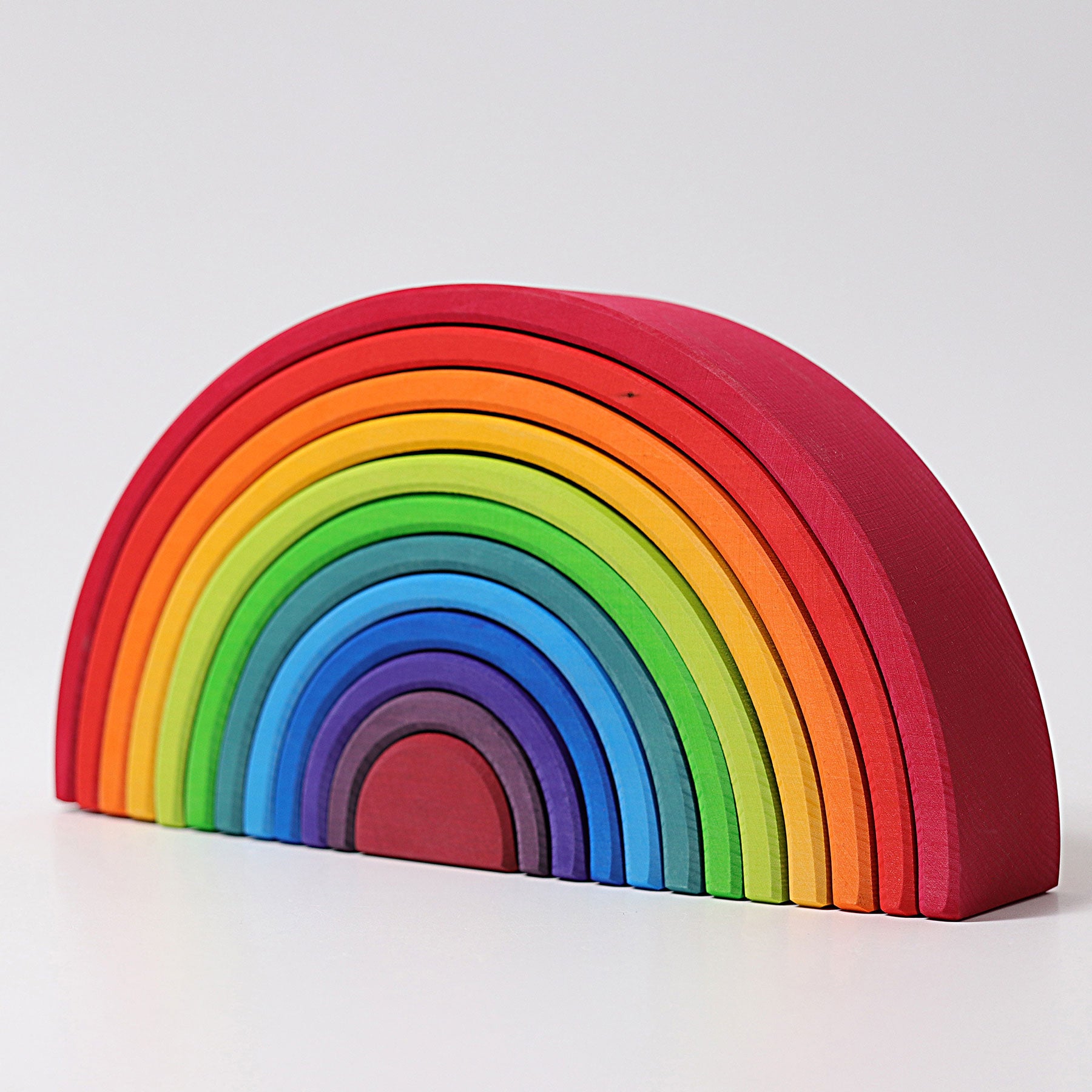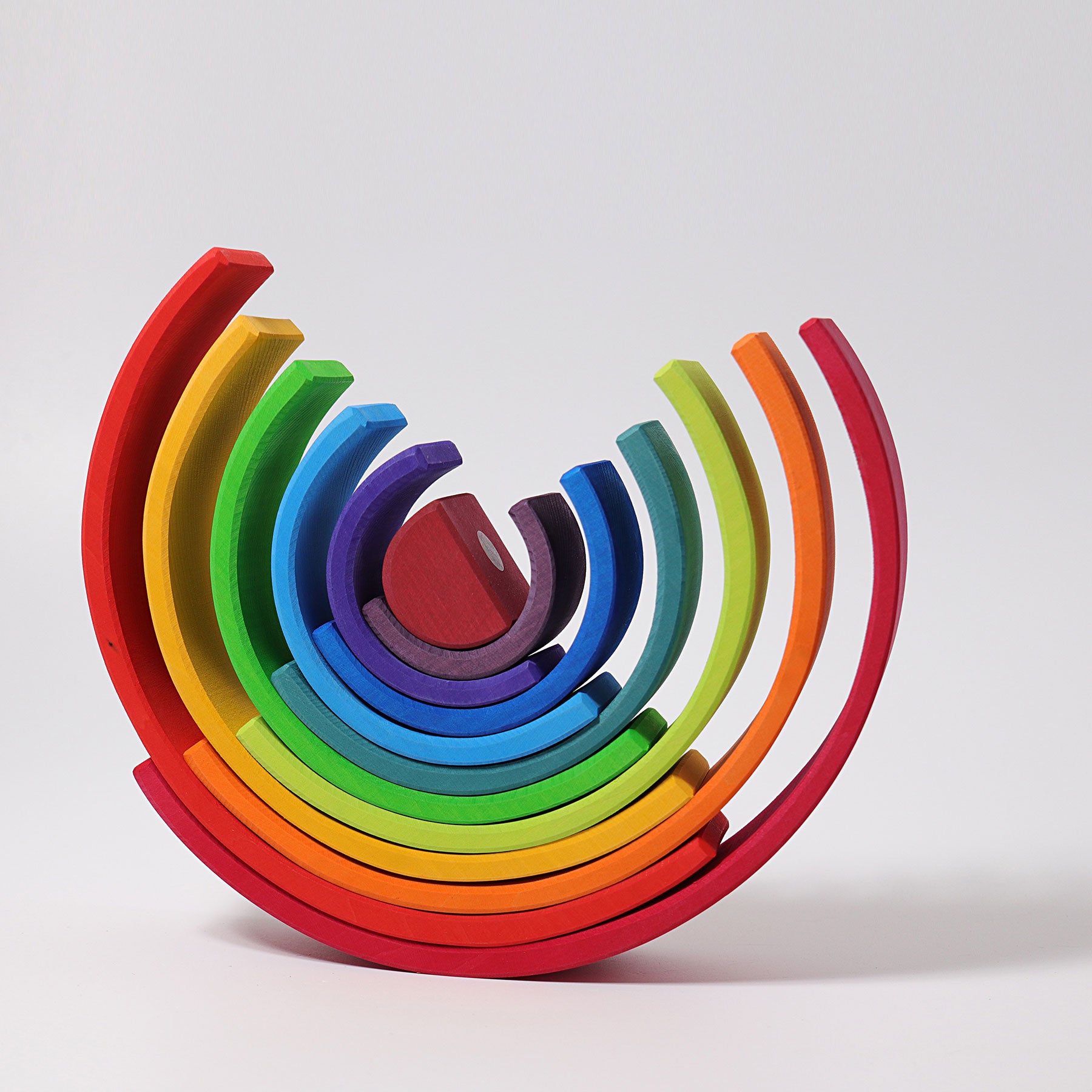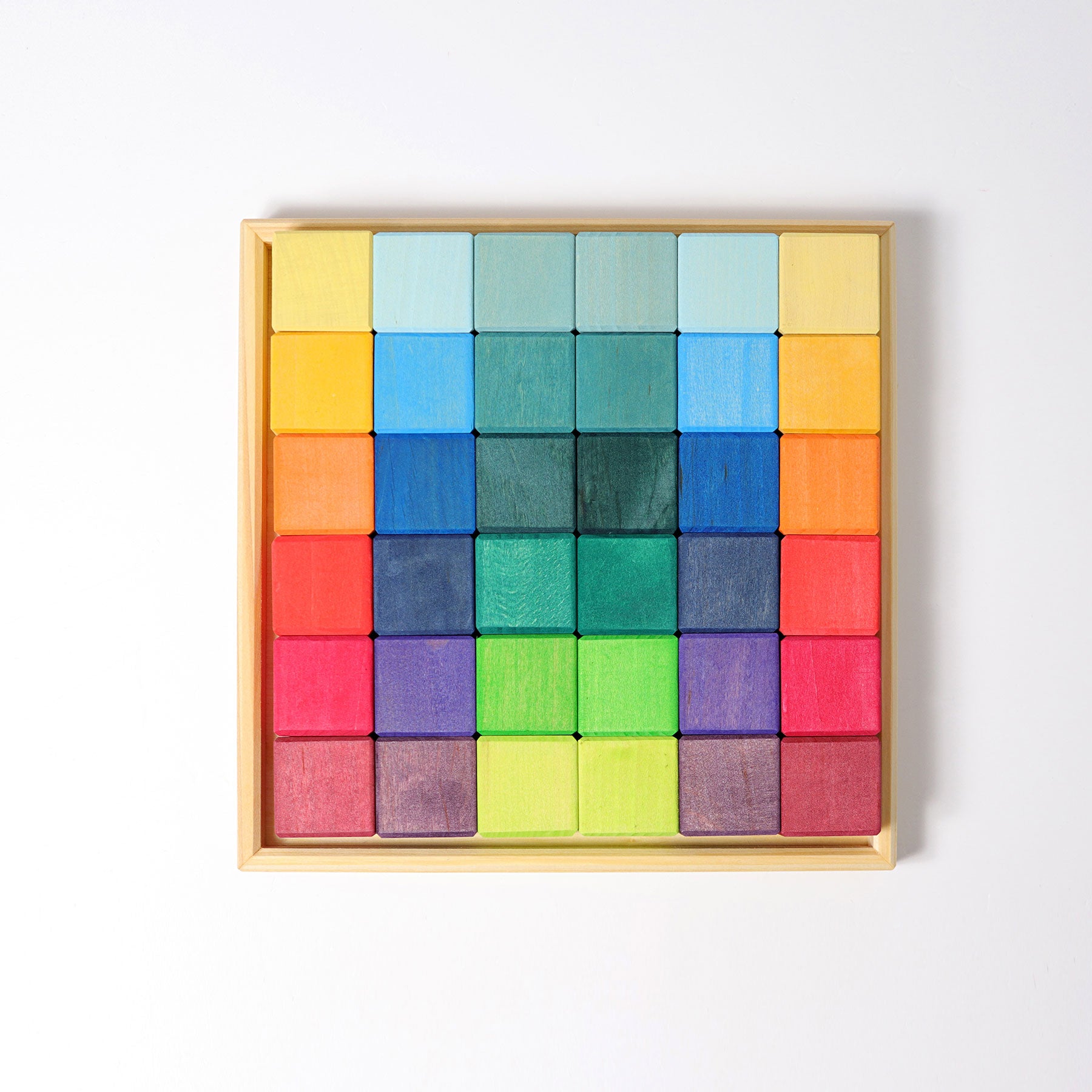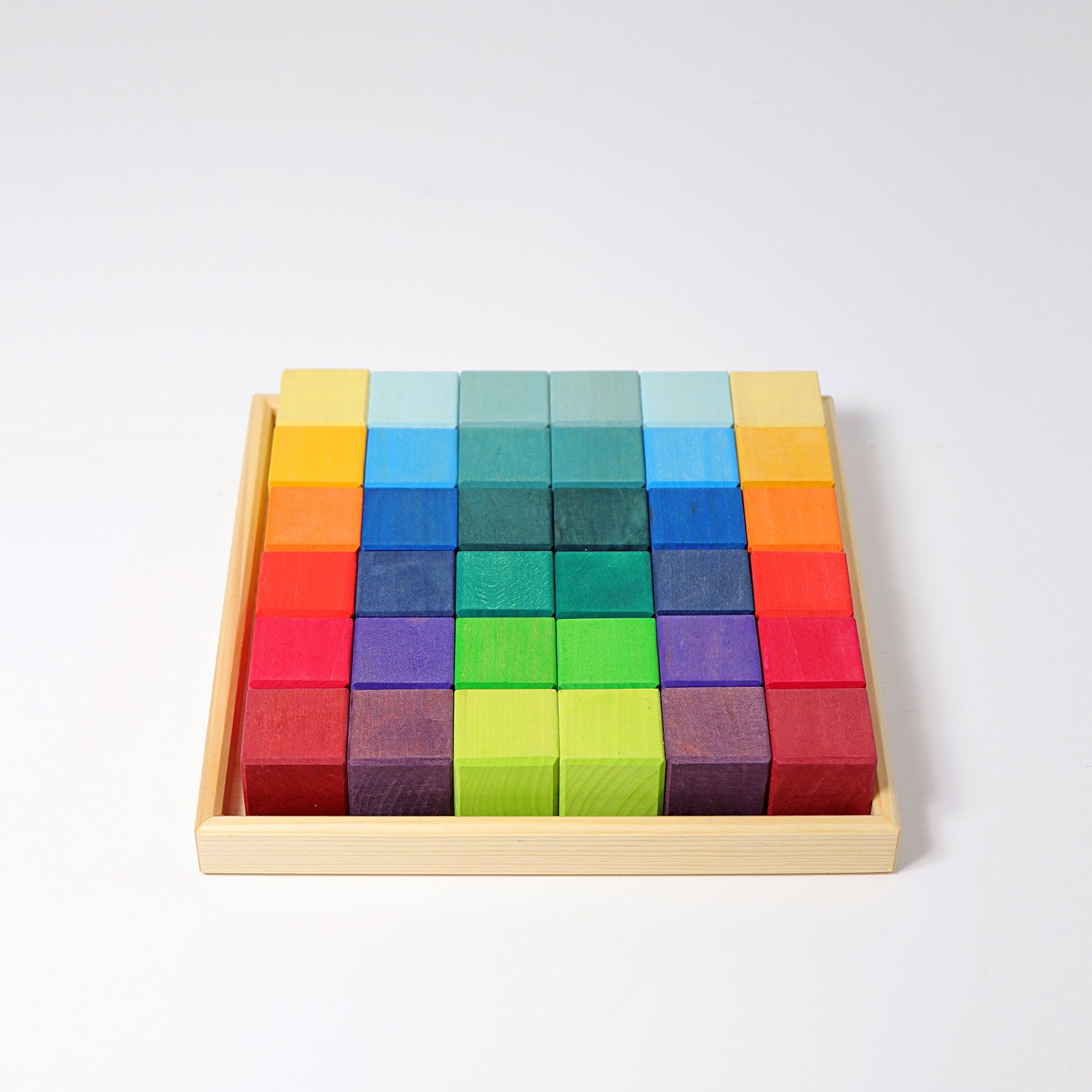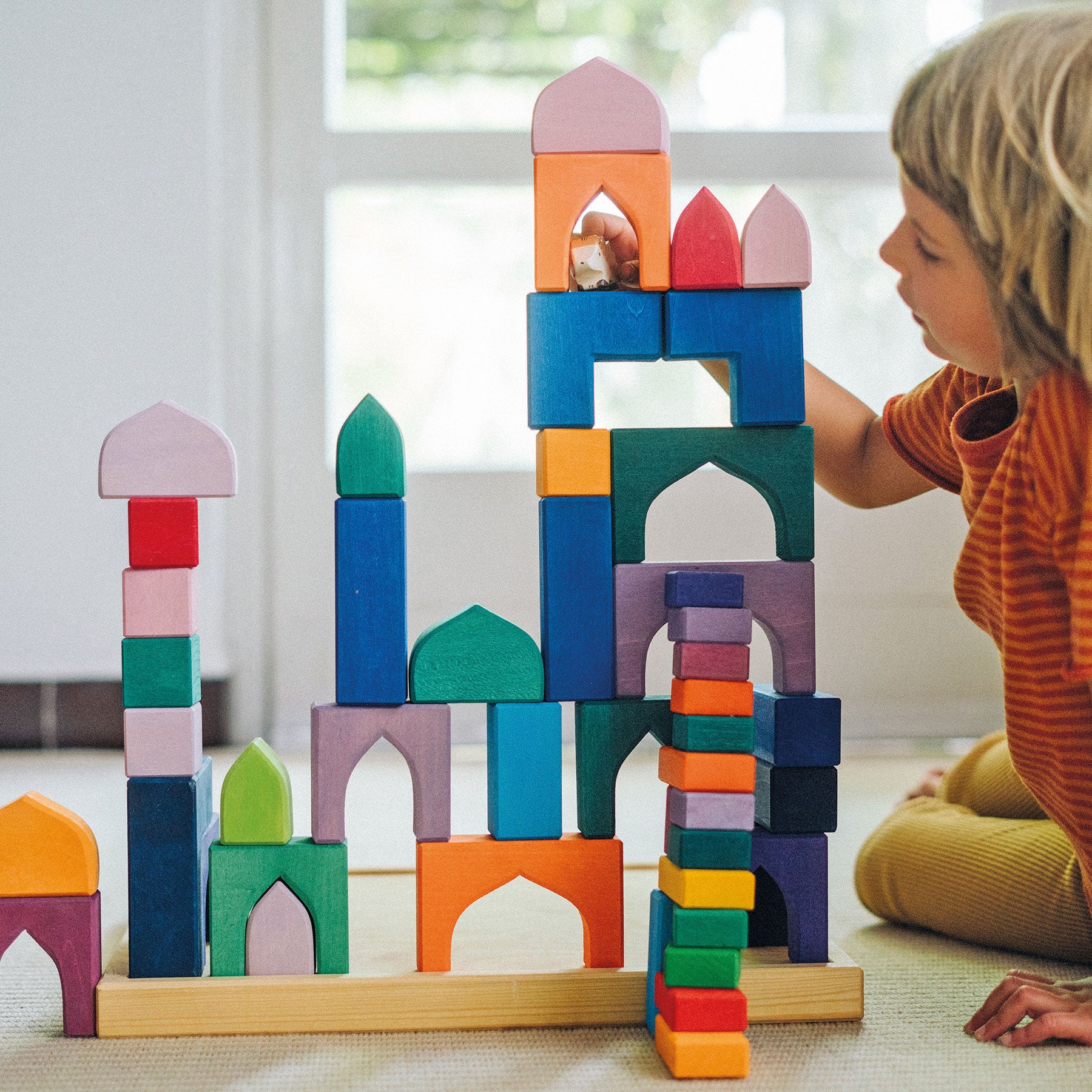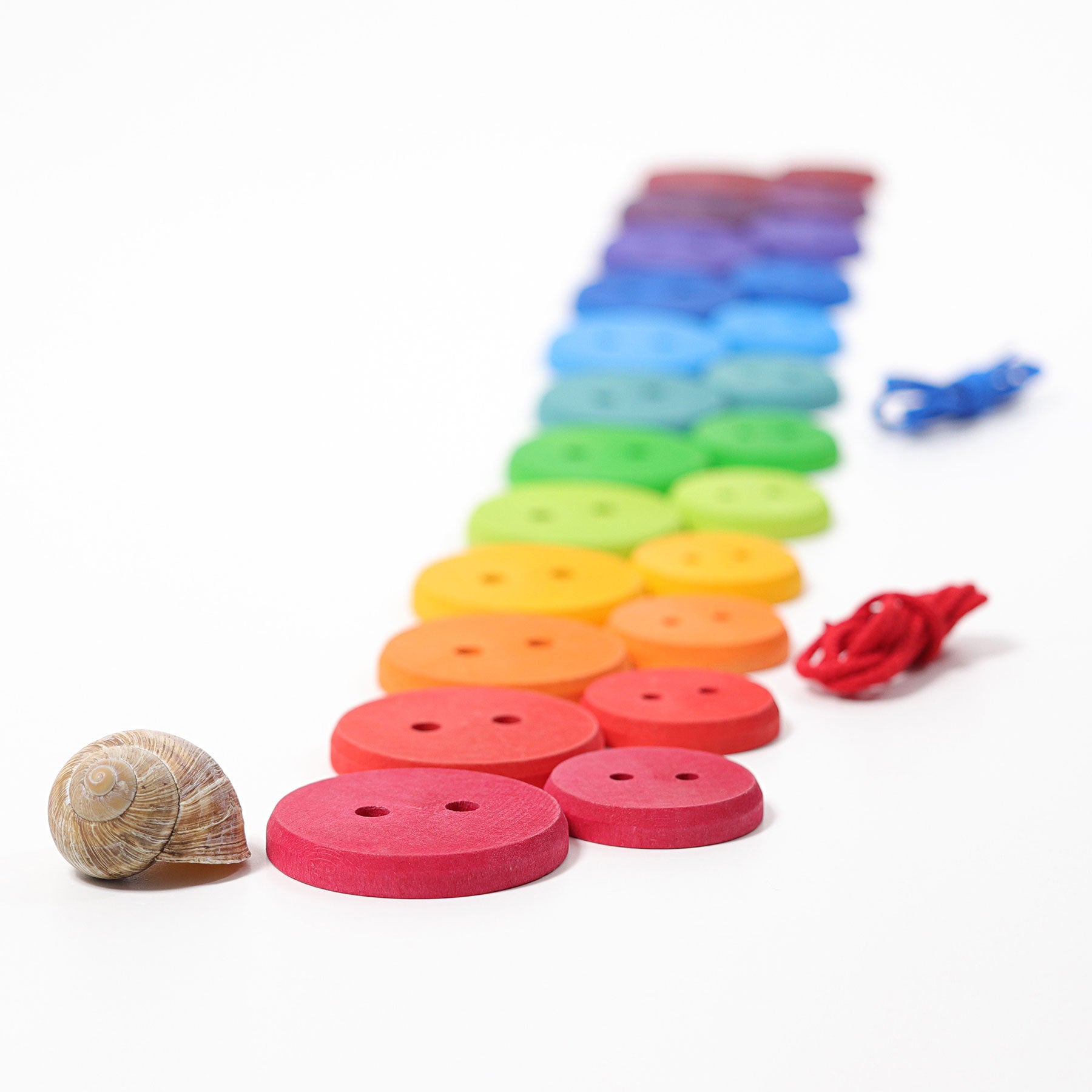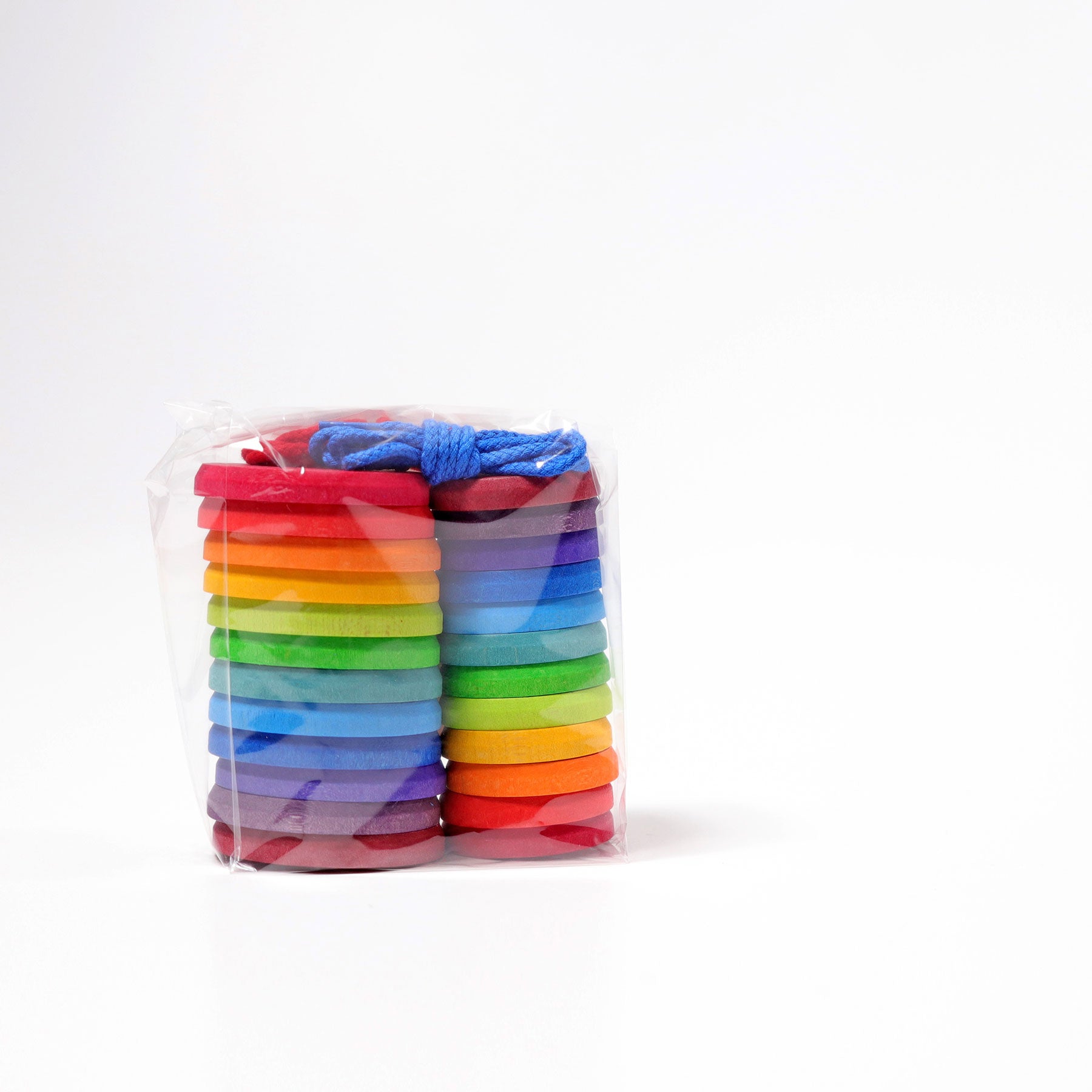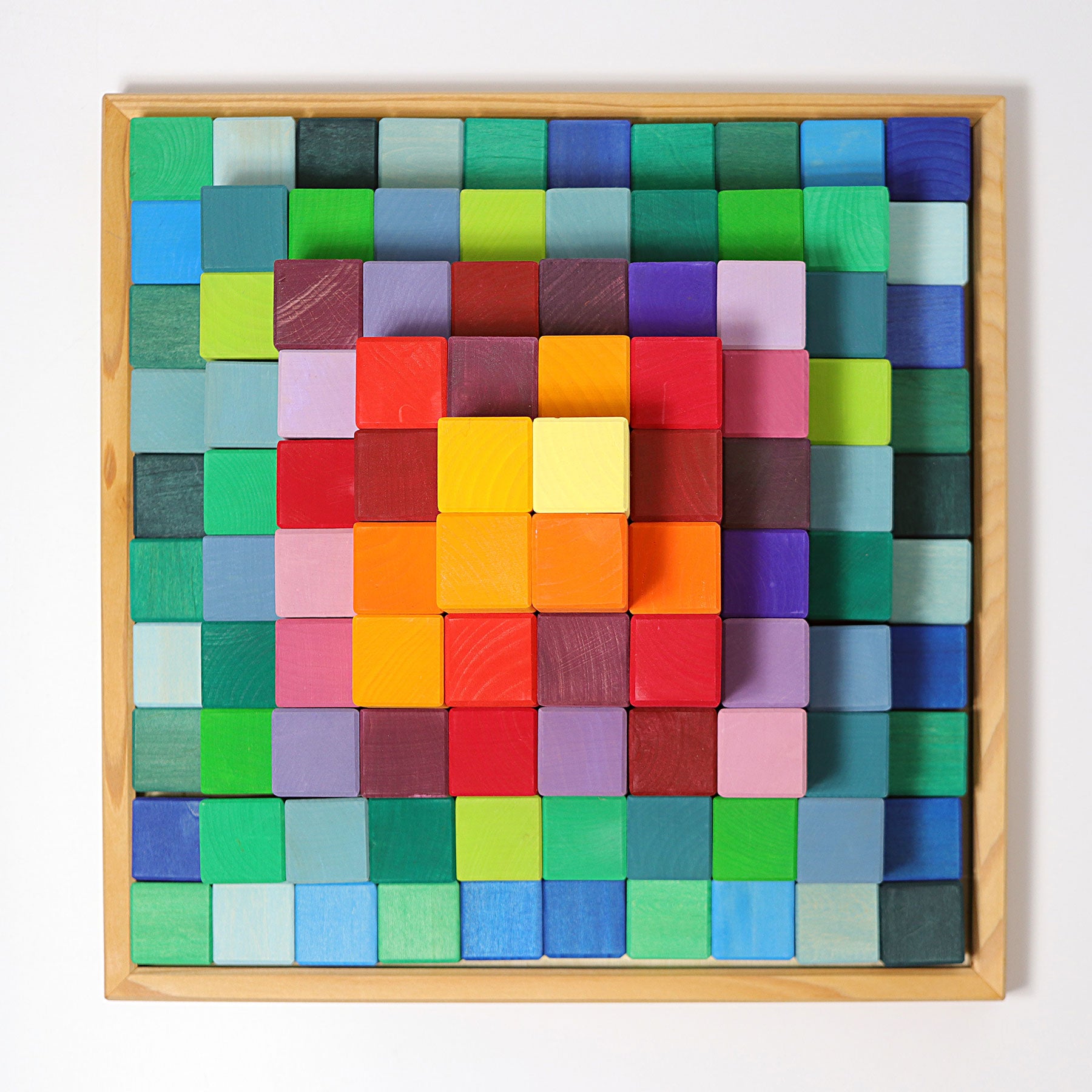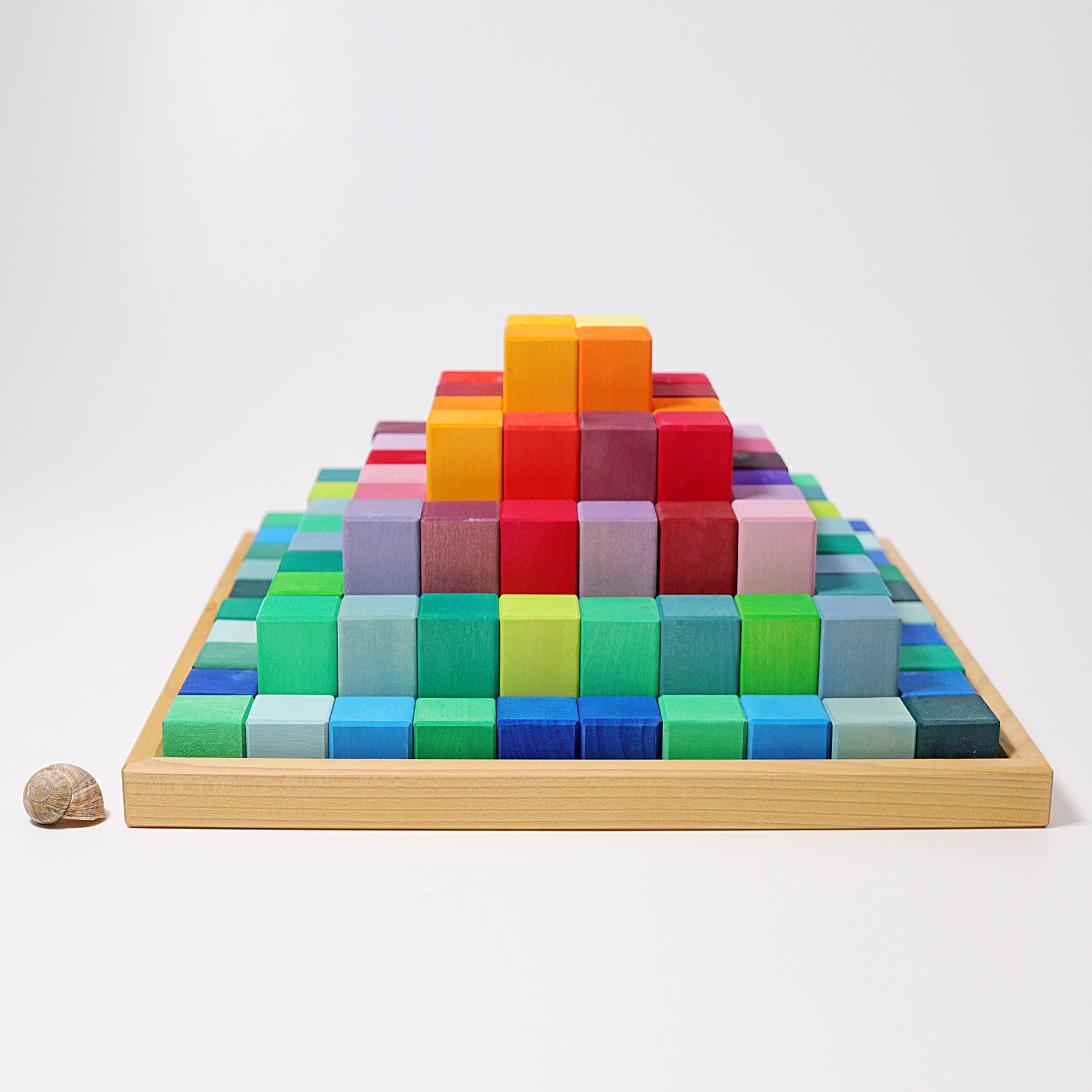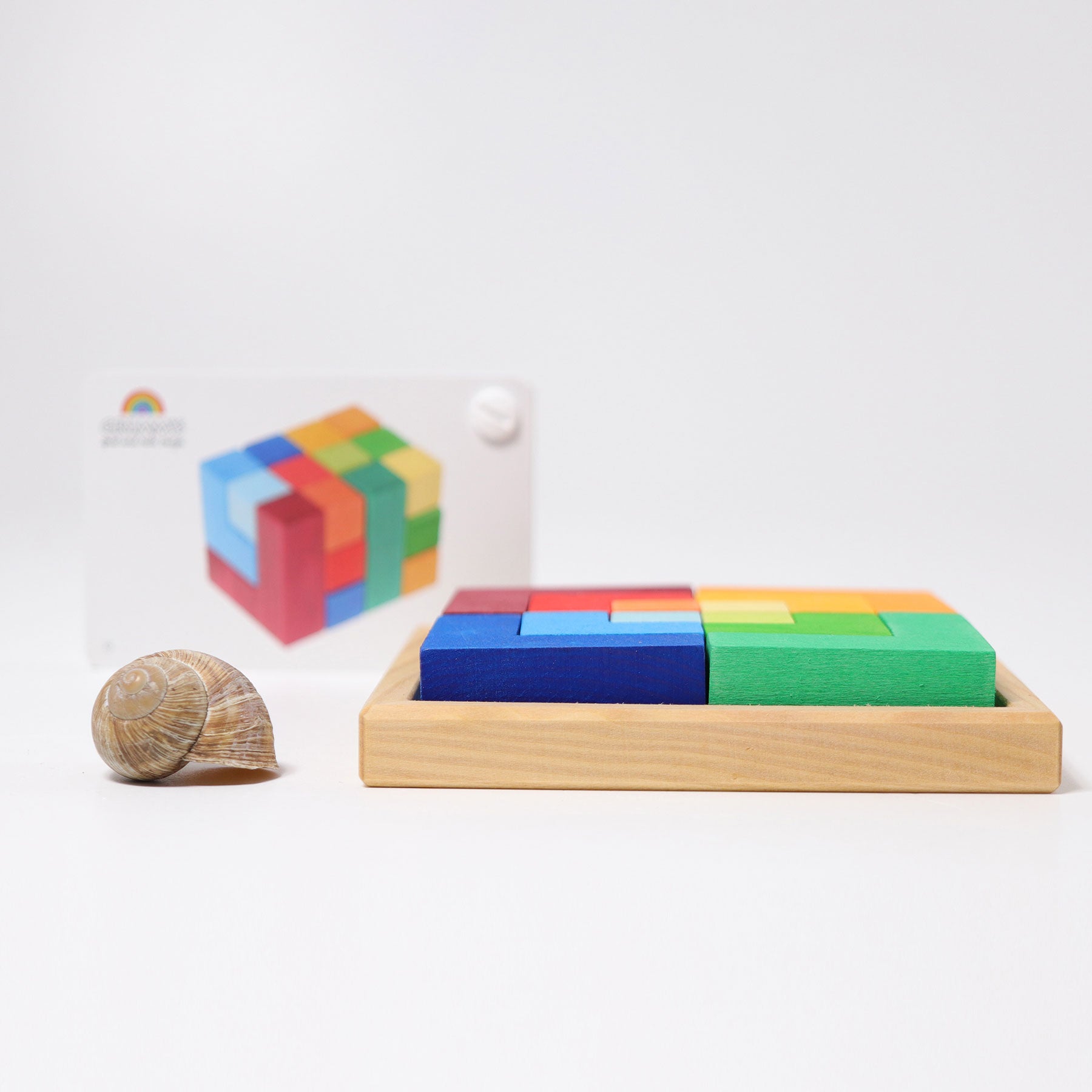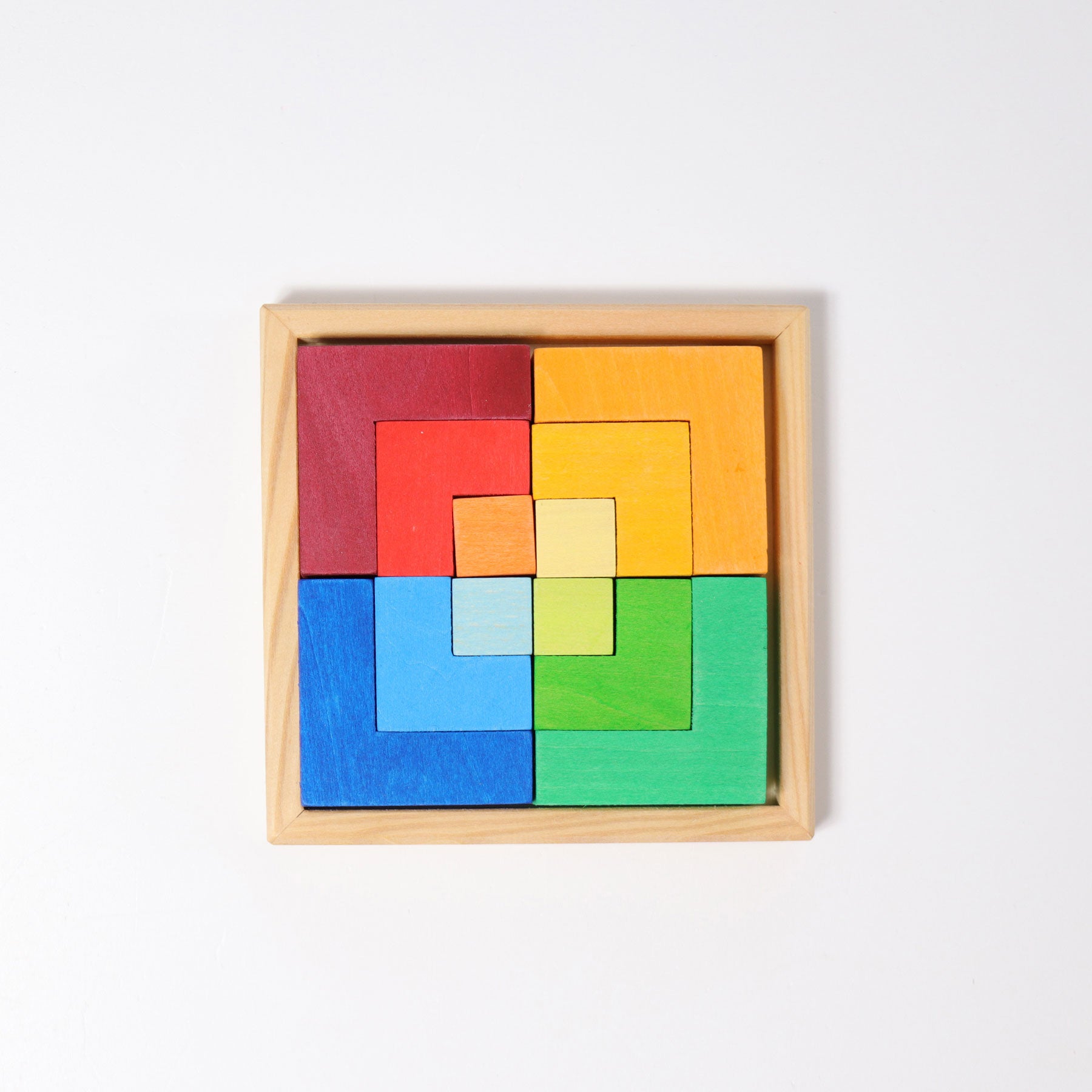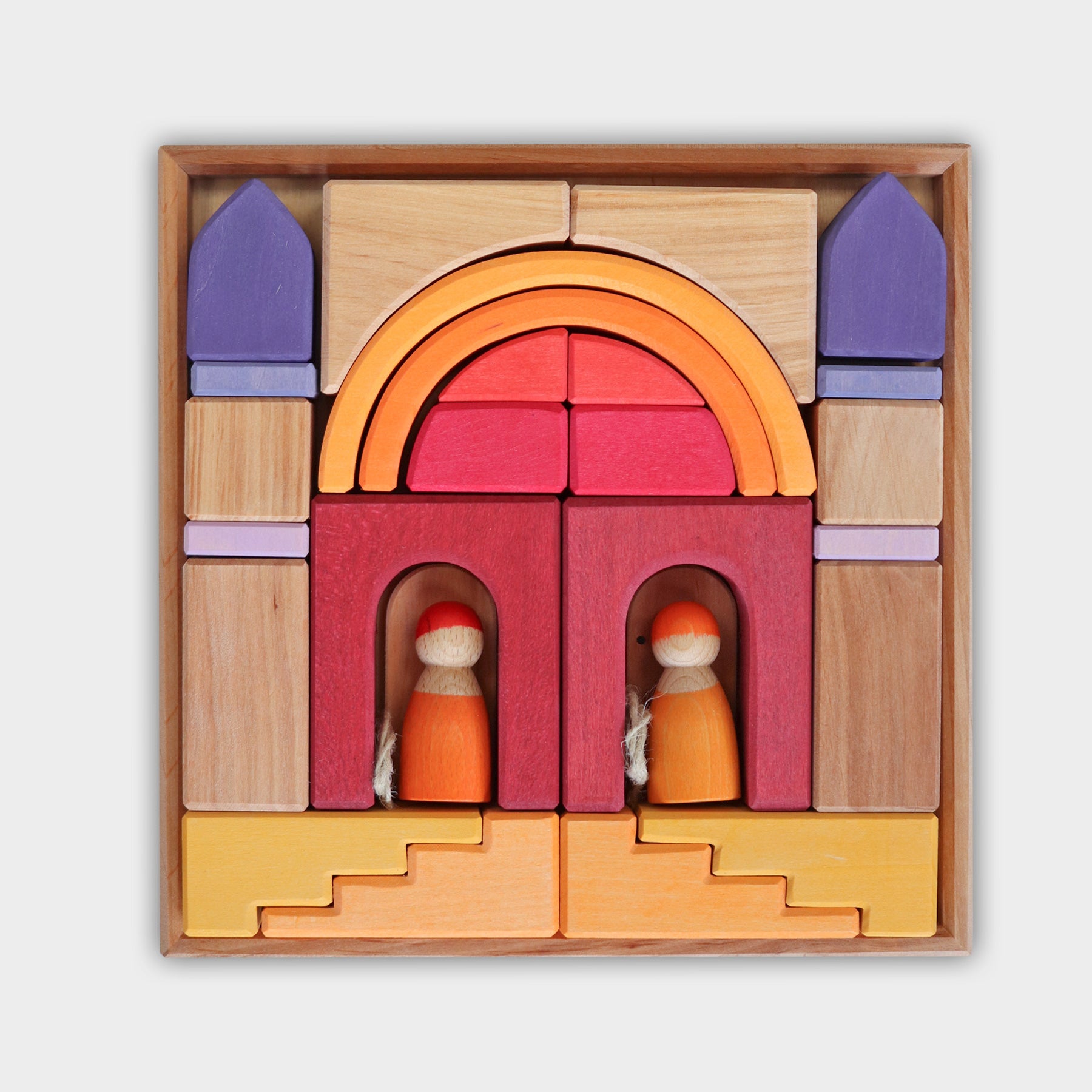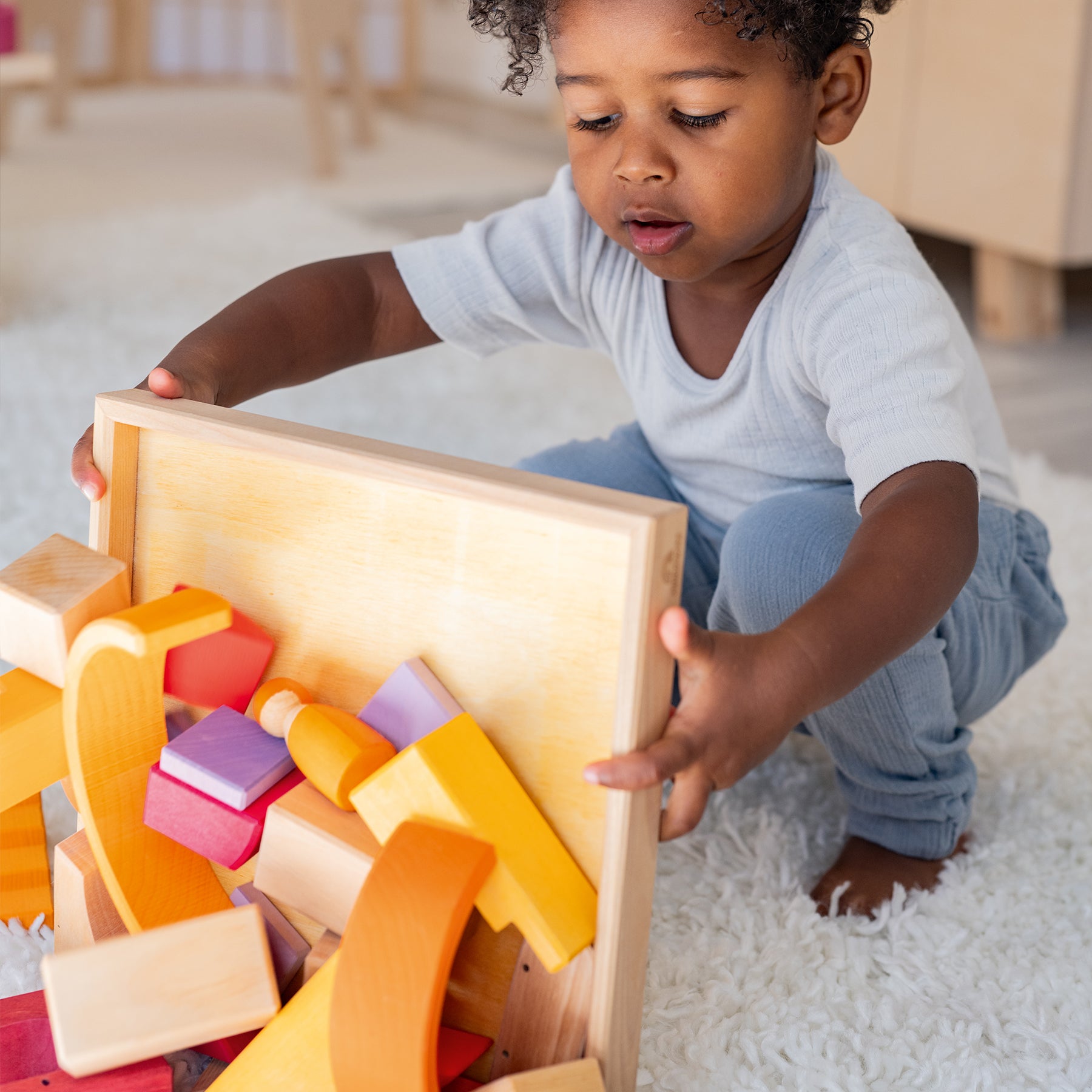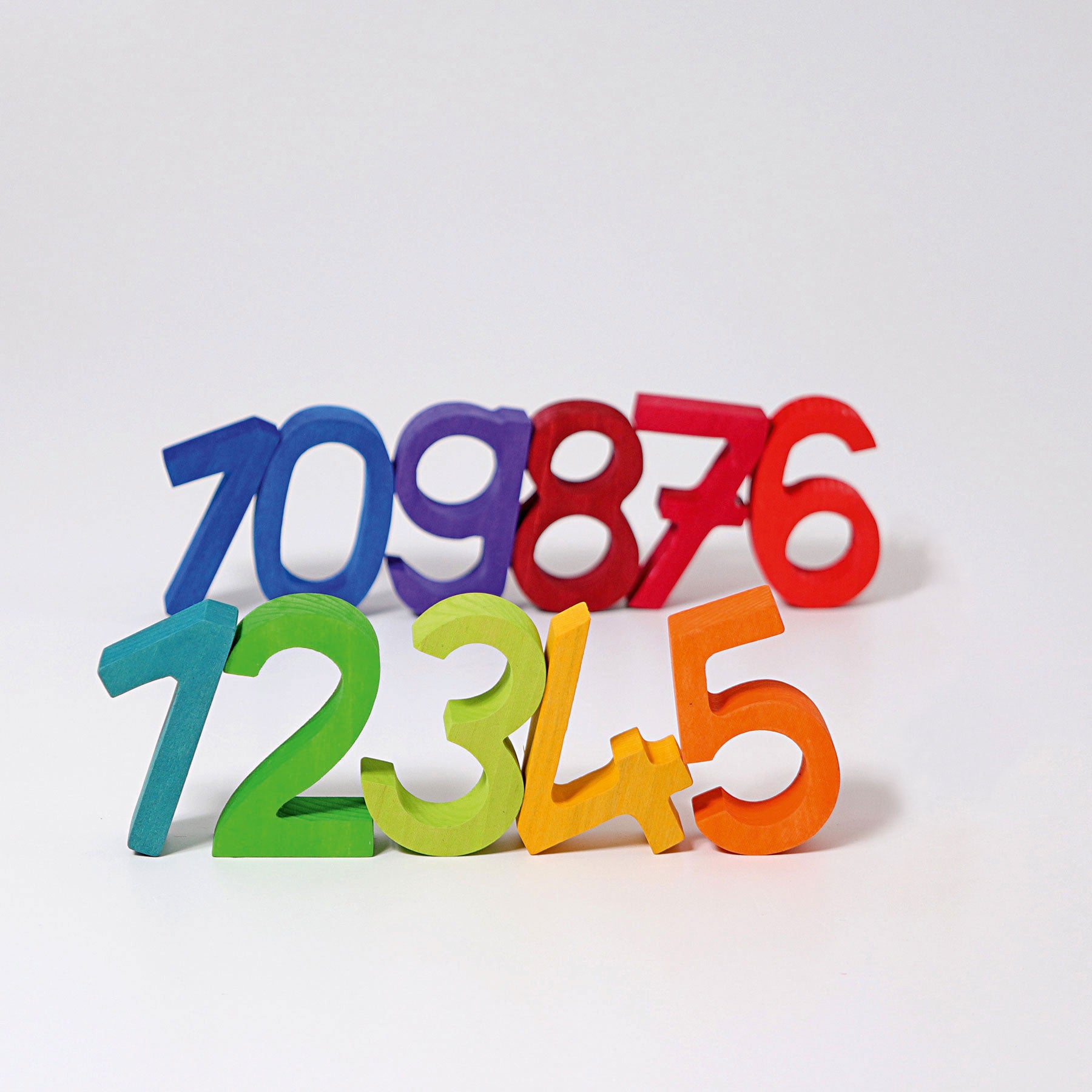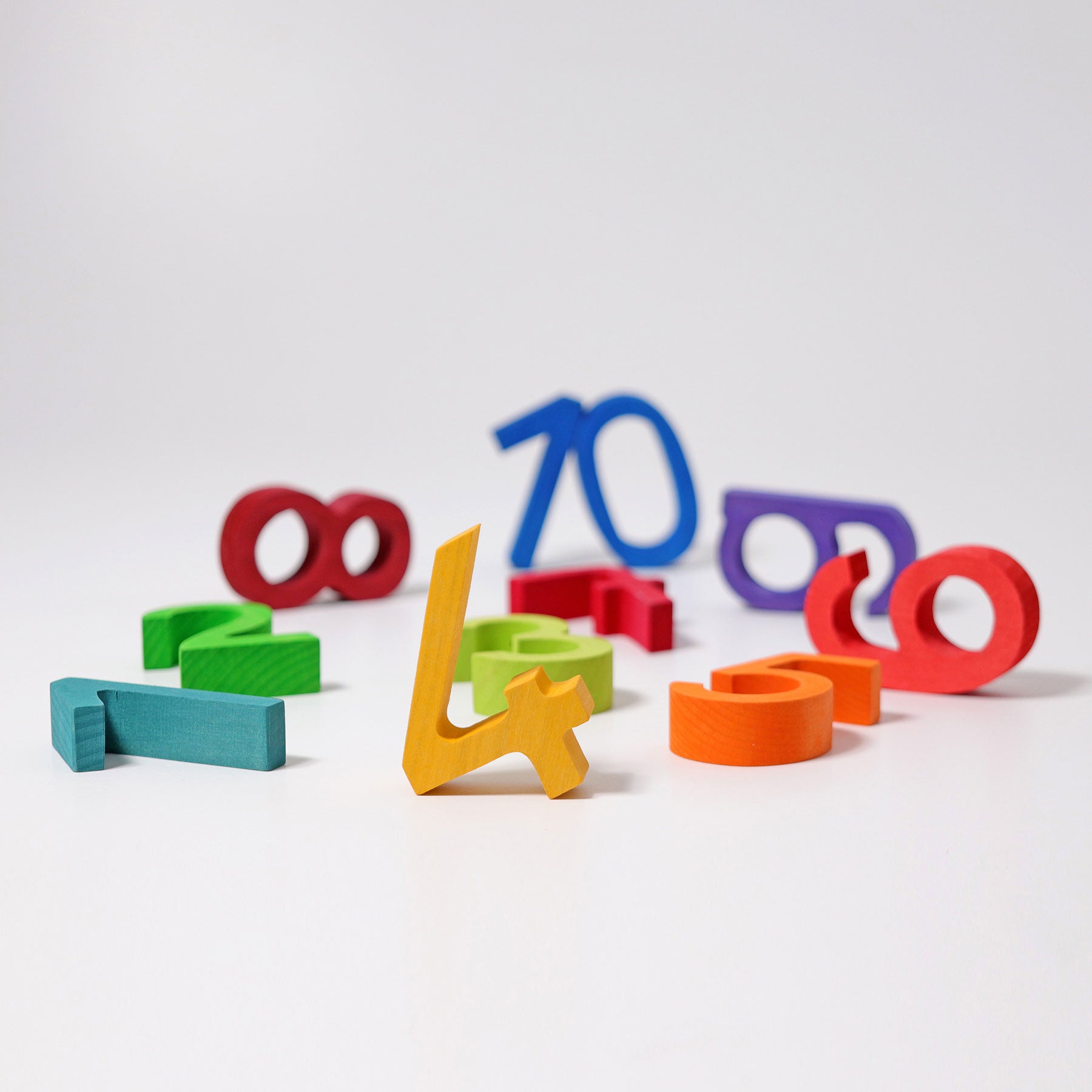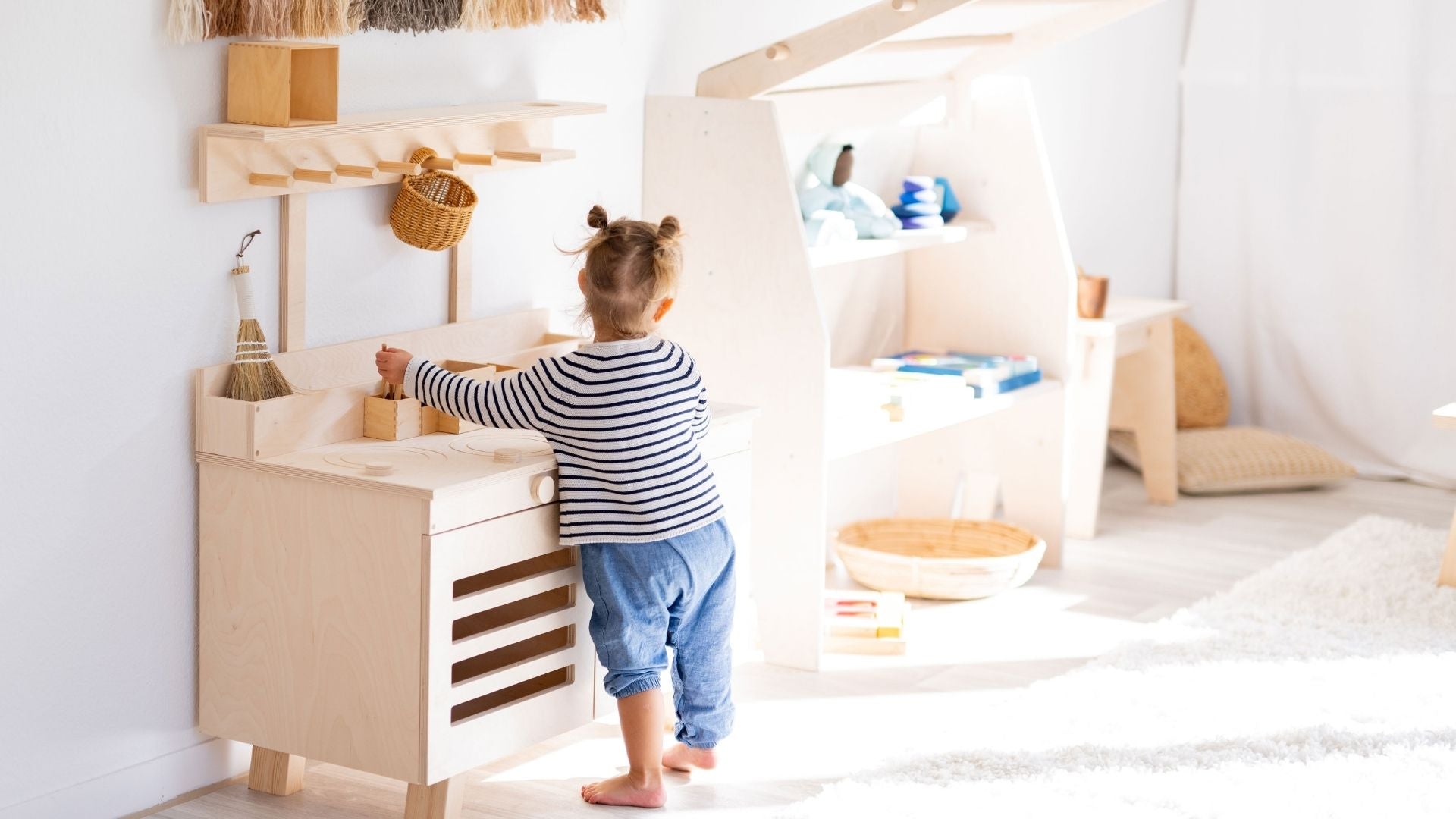A text by Simone (GRIMM'S)
Children are individuals. Depending on their age, developmental stage, and personal interests, they want to explore and understand the world we live in. We parents (grandparents, aunts, uncles, educators, or teachers are all equally welcome here) play an important role in this. If we want to encourage our youngest children in the Montessori way, the first step is to closely observe their interests and abilities. Only in the second step do we provide a so-called prepared environment based on our observations, with carefully designed materials and activities. This allows children to learn independently, at their own pace, and without constant adult intervention. But which materials and activities are suitable? In this article, we present various Montessori ideas that we have divided into age categories. However, the following applies: You are the expert on your child and know their interests and abilities best. It is therefore quite possible that a kindergarten child might be interested in the toddler or preschool category. The key here is to observe carefully and filter out the right ideas for your child. Have fun!
1. Montessori ideas for toddlers (1 to 2 years)
From their first birthday, your little one is officially considered a toddler. You can now support your child not only in everyday life. There are also many Montessori ideas for fun and playful activities that support the learning of new skills. Building blocks with a minimalist design can be ideally integrated into this. Children aged 1-2 are particularly interested in the following activities:
- Loading and unloading
- Sort
- Imitation
- First building & plugging
- Look at picture books
Offer your child a selection of wooden building blocks in a basket. They'll have a lot of fun putting the blocks in and out again and again. Constant repetition improves hand-eye coordination.

What I don't see isn't there – or is it? The mental ability to understand that objects or people don't completely disappear once they leave our field of vision is a milestone in child development. With a simple game idea, you can help your baby understand what's known as object permanence. You don't necessarily have to buy an expensive Montessori toy that can be used solely for this purpose. With GRIMM'S giant building blocks, you can create this little Montessori DIY yourself. And then reuse the blocks for stacking.
Step 1: 
Step 2: 
Step 3: 
Step 4: 
Simply follow our illustrated instructions and let your little one experiment: A wooden ball is placed into the round opening, disappears briefly, and then reappears. This means that not everything that disappears briefly stays gone. The objects (or people) are still there, albeit in a different location.
Whether by color, size, or shape, there are countless ways to categorize things every day. Set up a Montessori-style sorting game by laying out boxes of different sizes and sorting materials—e.g., nuts. You can let your child experiment freely, or you can set a more precise goal by placing one type of nut in each bowl, which they then have to fill with the remaining nuts. With this Montessori idea, your child will learn about small, medium, and large and improve their hand-eye coordination. You can accompany this activity with words while your child sorts. This could sound something like this: "Yes, the medium-sized chestnut goes in the medium box."
Important: Don't correct your child if they misidentify a nut, but give them the opportunity to notice and correct the mistake themselves. You'll be amazed at how well your competent toddler can do this on their own.
Oh and: Of course, this game idea must be supervised by an adult, as the oral phase is still ongoing in children under three years of age and there is a possibility that small parts that could be swallowed could end up in the mouth.
2. Montessori ideas for kindergarten children (3 to 4 years)
At three years old, your child has reached kindergarten age and the oral phase is over—or at least is coming to an end. If you want to keep your child busy after kindergarten or on the weekend, Montessori trays are particularly suitable. All the materials needed for a Montessori activity are placed on a matching tray. This way, the "ingredients" don't get mixed up and your child can concentrate on that one activity. The following activities are particularly exciting for children aged 3 to 4:
- Imitative play
- Movement to music
- Threading
- Three-dimensional construction
- Putting pictures & puzzles
Beads, buttons, or short penne pasta: Kindergarten children have a lot of fun threading things onto a string. This creates fun necklaces that can be proudly worn as homemade jewelry. Start the threading exercises with easily graspable objects and larger holes and increase the difficulty once your child has mastered the first hurdles. Prepare the Montessori tray by placing large wooden buttons in a basket and offering a matching string. Your child will quickly understand what to do and try their first threading attempts. Tip: If you don't have a string with an end piece at home, you can wrap a short strip of sticky tape around the end of the string to prevent fraying.

By kindergarten age, most children are already quite good at matching shapes and colors. But how about letting your child help create a new game idea? You already have everything you need at home: a piece of paper, a pencil, and a few differently shaped building blocks. Now the children have to circle these blocks with the pencil. Then the blocks go into a basket. The goal of the game is to match the blocks to the drawn shapes.

Is your child a real puzzle fan and knows almost every puzzle by heart? Then a construction set might be just the right toy for you. It contains differently shaped building blocks housed in a wooden frame. Once emptied, the pieces can be put back into the frame in a variety of different ways. Since there's no right or wrong way, the puzzle doesn't get boring quickly and encourages children to keep discovering new variations.


3. Montessori ideas for preschool children (5 to 6 years)
Even at preschool age, many children begin to show interest in numbers, letters, and the world we live in. Use this sensitive period to quench your child's thirst for knowledge in a playful way.
Deepening interest in the world and stories
- Advanced Building
- Learn letters
- Get to know numbers
Minimalistic building materials can be used in a variety of ways. How about, for example, creating your own play world? You can either prepare this in advance or come up with something together. Depending on your child's interests, you can recreate everyday situations such as a traffic scene with pedestrians, cars, tunnels, etc. A farm scene, incorporating existing animal figures, is also possible. Either way: Through active engagement in self-built play worlds, children can better understand processes and relationships.
Tip: If you're looking for inspiration for play worlds, you'll find it on our dedicated Pinterest board. Alternatively, our Northern Lights or Desert Castle building worlds are perfect for exploring life in the far north or the desert.

A, B, C – the cat is lying in the snow. Through rhymes and songs, children are introduced to the alphabet at an early age. If they can grasp the 26 letters literally, they quickly develop a better feel for them, and the differences between C and G or B and P become clear. An ABC game in which the letters can be removed and felt individually is the ideal play material for little letter fans. After an initial introduction, various Montessori ideas can be tried out with the letters. Two examples:
Hidden letters: The letters are covered. The child puts their hands under the blanket, picks out a letter, and feels it until they can guess. Then the blanket is removed, and your child can visually check whether they guessed correctly.

2. Z is for Zebra: Walk around your house and collect six small objects that begin with different letters. Place them in a basket with the matching wooden letters from the ABC game. Your child's task is to find the matching pairs.

Your child can probably already count to 10 and has certainly experimented with imaginary amounts during a role-playing game called "shopping." Often, little ones still lack an understanding of realistic quantities: One scoop of ice cream sells for €9, while three scoops of ice cream cost €2. With number-inspired Montessori ideas, you can help your preschooler develop a better sense of numbers and quantities. Start easy and increase the difficulty only when your child is ready and shows interest. Anything is possible, but nothing is necessary! Two examples:
Prepare a tray with the following materials: 1 wooden frame, different colored wooden numbers, a bowl with filling material (e.g., corn kernels), small wooden beads in the same color as the numbers, and tweezers. Your child's task is to place one number at a time in the wooden frame and then use the tweezers to fish out the corresponding number of wooden beads from the bowl. Make sure there are only as many beads in the bowl as necessary. This allows your child to self-check.

2. Are you a true GRIMM'S fan and do you have this classic toy in your child's room? Great, then you can use your favorite toys for this idea. You will need: A 10-piece rainbow – for example, from GRIMM'S Numberland (if you have a 12-piece rainbow, simply set the smallest and largest sheets aside), lots of loose small pieces (e.g. 10 beads, 9 rings, 8 hazelnuts, etc.) and wooden numbers. Your child can now place the sheets on the floor. The smallest number "1" is assigned to the smallest sheet, the second largest number "2" is assigned to the next largest sheet, and so on. Finally, the loose small pieces need to be placed in the appropriate sheets.

4. Montessori ideas for school children (7 to 9 years)
Most children look forward to school and take great pleasure in understanding and applying the world of numbers and letters from the ground up. Seven- to nine-year-olds are particularly interested in the following areas:
- Learning to read and write
- Learn to count
- Sophisticated construction
Understanding three-dimensional construction on paper can be quite challenging. It becomes clearer when children can take matters into their own hands – literally. With the following Montessori idea and GRIMM'S Rainbow Mosaic, challenging construction becomes understandable.
And here's how it works:
1. Print the pages and cut them in half: Click here for a free download.
2. Provide the 3D graphics, the appropriate floor plan and a sufficient number of cube-shaped building blocks on a tray.
3. The task now is to recreate the 3D graphic on the floor plan.
4. Finally, you can use the control card to determine whether the task was solved correctly.

The Small Square Building Game is a practical learning toy for on the go. Although it's already complete in itself—and therefore not a Montessori idea in the true sense of the word—I don't want to withhold it from you here, because this puzzle toy is ideal for playfully learning and understanding 2D and 3D learning content. The 12 differently shaped building blocks in a wooden frame come with a matching activity booklet showing constructions of varying weight to be recreated. This develops fine motor skills and spatial reasoning.

Did you enjoy this post and want to see more Montessori-inspired play and activity ideas with GRIMM'S? Then visit our ever-growing Montessori Pinterest board and get inspired for all ages and developmental stages.
Have fun with it!

